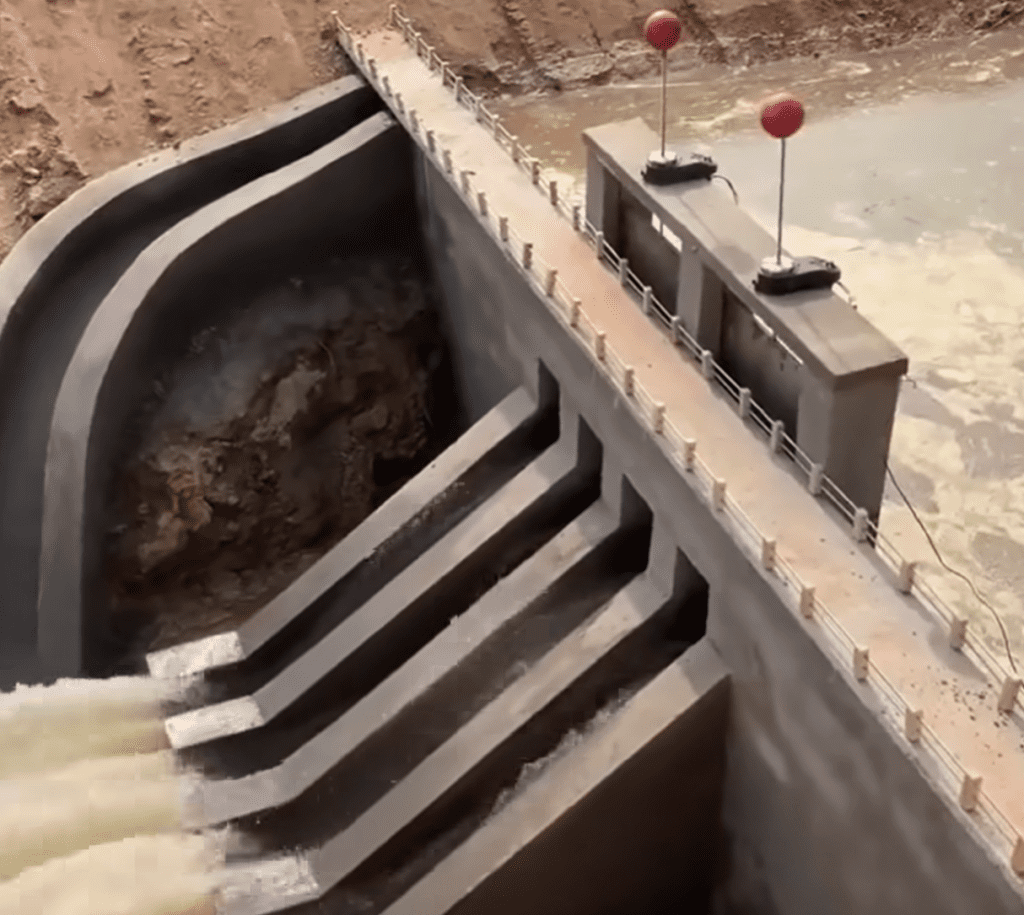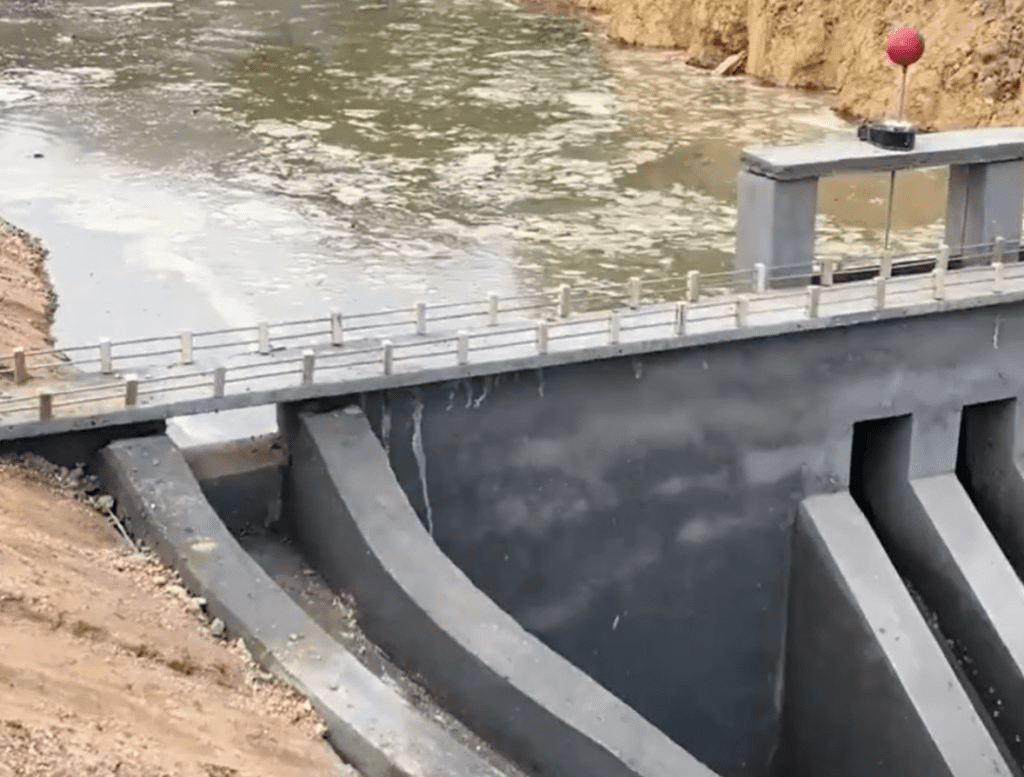In the context of increasingly complex climate change, water management—especially in areas prone to heavy rainfall, storms, or flooding—has become a crucial factor for sustainable development. The construction of a powerful 4-gate spillway (or multi-gate spillway) is considered an advanced engineering solution that helps control water levels and prevent flooding, protecting communities and assets. In this article, we will explore the features, benefits, and challenges involved in building a powerful 4-gate spillway.
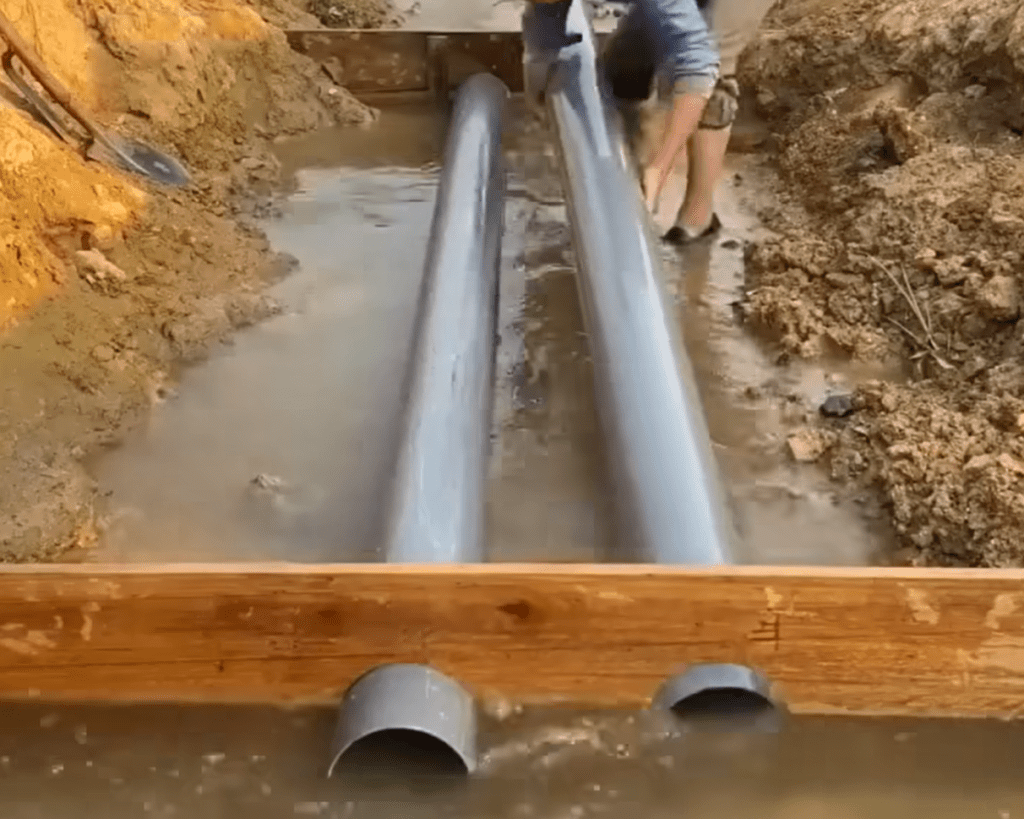
1. What is a 4-Gate Spillway?
A 4-gate spillway is a hydraulic structure consisting of four discharge gates designed to control the flow of water from a reservoir or river, regulate water levels, and reduce the risk of flooding in a given area. Each gate can be opened or closed as needed, allowing for flexible and efficient flow management. These gates are constructed from durable materials capable of withstanding high pressure and stress, ensuring the stability and safety of the structure under all weather conditions.

2. The Importance of a 4-Gate Spillway
In water systems such as reservoirs or dams, one of the greatest dangers is a sudden rise in water levels due to heavy rainfall, storms, or snowmelt. At such times, the ability to release water promptly is crucial to preventing overtopping, protecting infrastructure, and minimizing damage to the community. A powerful 4-gate spillway can address this issue by increasing the water discharge capacity, reducing the risk of dam overflow, and stabilizing water levels.

Moreover, in agricultural areas, the spillway also plays a key role in water management by regulating the flow to ensure adequate water supply during dry seasons and proper drainage during the rainy season. This not only helps maintain agricultural productivity but also prevents flooding, creating a favorable environment for local economic development.
3. Technical Features of a 4-Gate Spillway
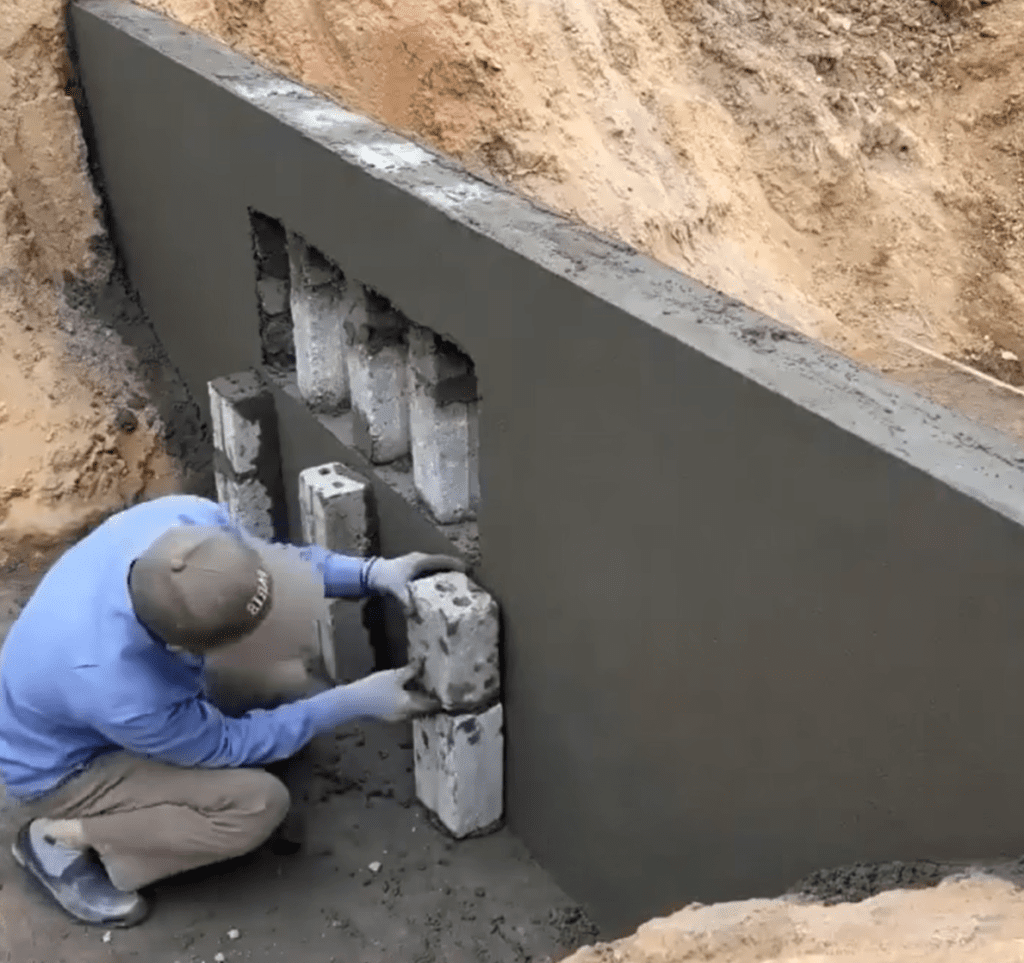
To maximize the effectiveness of a 4-gate spillway, its design and construction must meet strict technical requirements:
- Gate size and number: Each gate must be sized appropriately to discharge sufficient water within a short time when necessary. The use of four gates allows for even distribution of pressure and flexible flow control.
- Materials used: The gates must be made from corrosion-resistant, high-strength materials such as stainless steel or reinforced concrete. Mechanical, hydraulic, and electronic components should be selected carefully to ensure stable operation under all conditions.
- Automatic control systems: To improve efficiency and reduce manual intervention, a 4-gate spillway is often equipped with an automatic control system that allows for accurate monitoring and adjustment of the flow. Sensors and continuous monitoring systems provide real-time data on water levels and meteorological conditions, enabling timely decisions about when to release water.
- Load-bearing capacity and long-term stability: The gates must be designed to withstand significant water pressure, as well as environmental factors such as wind, seismic activity, and storms.
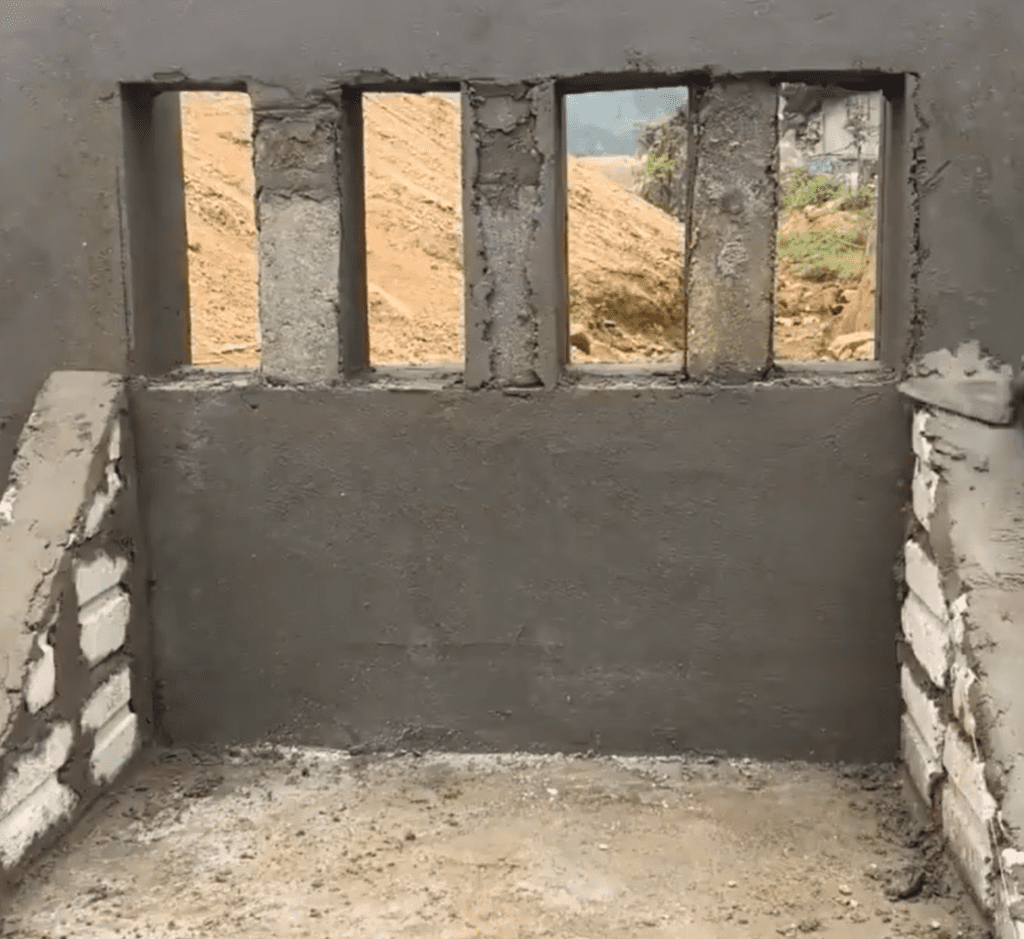
4. Benefits of a 4-Gate Spillway
- Effective flood control: This is the primary benefit of a 4-gate spillway. By allowing for flexible and precise regulation of water flow, it helps mitigate flood risks during heavy rainfall or storm events, thereby protecting property and lives.
- Improved water supply for agriculture: A spillway helps manage water resources for agriculture, ensuring adequate irrigation during dry periods and efficient drainage during the rainy season. This is crucial for sustaining crop production, especially in areas vulnerable to droughts.
- Mitigating climate change impacts: By enhancing water management capabilities, the 4-gate spillway helps communities better cope with extreme weather events such as large storms, floods, and droughts.
- Protecting infrastructure: A well-designed spillway can safeguard critical infrastructure, including levees, bridges, residential areas, and industrial facilities, from flood damage.

5. Challenges in Constructing a 4-Gate Spillway
While a 4-gate spillway offers many benefits, its construction is not without challenges. Key issues include:
- High initial costs: The design and construction of a spillway require substantial investment, covering site surveys, technical design, materials, and installation of gates and control systems.
- Complex technical requirements: To ensure the spillway operates effectively, engineers must account for a variety of factors such as water flow rates, pressure, and meteorological conditions. This demands a high level of expertise and the use of advanced technology.
- Environmental impact: The construction of a spillway can affect local ecosystems, particularly aquatic species, wildlife, and surrounding habitats. Environmental protection measures must be taken during construction and operation to minimize these impacts.
- Ongoing maintenance and management: A 4-gate spillway requires regular maintenance to ensure its long-term functionality. Mechanical and electrical components must be carefully maintained to avoid malfunctions that could compromise its operation.

6. Conclusion
A powerful 4-gate spillway is an effective and sustainable solution for managing water resources, protecting property, and safeguarding human life against the threats posed by extreme weather events such as flooding. However, its design, construction, and maintenance require careful planning, skilled engineering, and collaboration between governmental agencies, local communities, and environmental stakeholders. As climate change continues to present new challenges, a 4-gate spillway can play an essential role in enhancing water management systems and supporting the long-term resilience of flood-prone areas.

